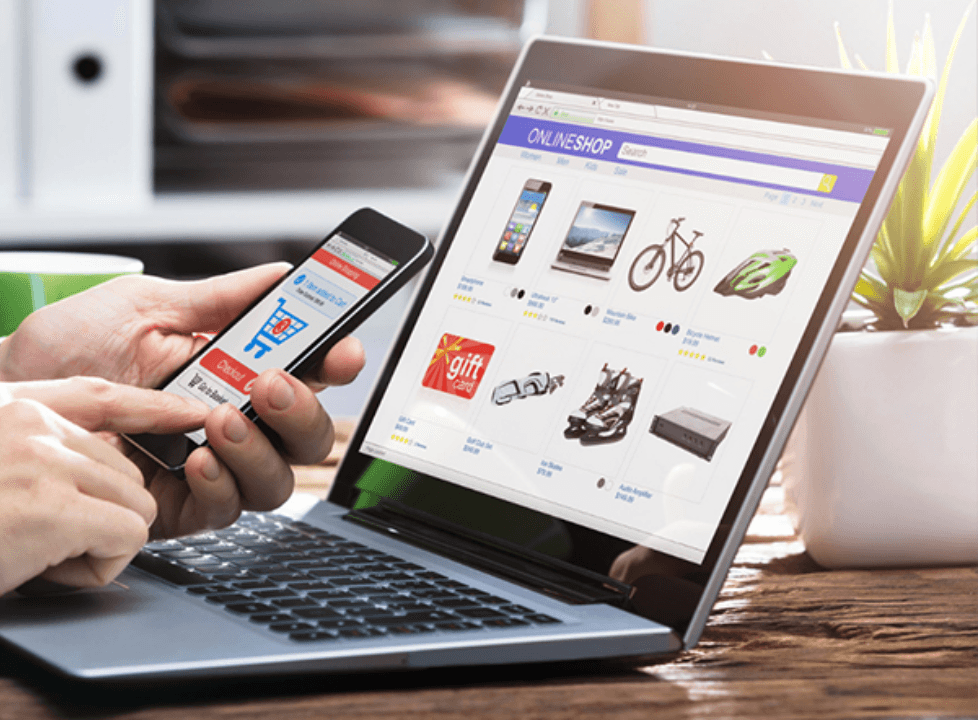Mobile devices now dominate online shopping. In fact, BigCommerce cites Statista projecting that 62% of all e-commerce purchases will be made on mobile by 2027 bigcommerce.com, reflecting the reality that roughly 59% of web traffic is already mobile siegemedia.com. To capture this audience, merchants must prioritize mobile-first e-commerce design. A lean, mobile-optimized site loads quickly and feels intuitive on small screens, keeping users engaged and reducing abandonment. Siege Media reports that “mobile-optimized websites load faster, keeping users engaged and reducing bounce rates”siegemedia.com. By contrast, slow or clunky mobile pages frustrate shoppers – eBay found that even a 0.1 second delay in search page load cost a 0.5% drop in “Add to Cart” clicks web.dev. In short, fast mobile UX means fewer drop-offs and higher sales.
A strong mobile UX also boosts SEO. Google now uses mobile-first indexing, meaning it ranks sites based on the mobile version of each page siegemedia.com. Siege Media notes that if a site’s mobile version “isn’t optimized or loads slowly, it could affect how pages are indexed”siegemedia.com. Mobile-friendly design and performance are ranking factors: Google has treated Core Web Vitals (LCP, FID/INP, CLS) as ranking signals since 2021wallaroomedia.com. Consequently, mobile-optimized stores tend to rank higher and attract more organic traffic. In practice, every millisecond counts: Google data shows that a mere 0.1s speed-up on mobile can raise retail conversion rates by 8.4% thinkwithgoogle.com. Optimizing for mobile not only delights shoppers but also yields SEO gains and more customers.
Key Impacts on UX, Conversions and SEO
Optimizing for mobile pays off in concrete metrics. Mobile users have little patience for delays: Google reports 53% will abandon a site that takes longer than 3 seconds to load siegemedia.com. In e-commerce, even small speed wins drive real business impact. For example, eBay reduced its search page load time by just 0.1 seconds and immediately saw +0.5% more “Add to Cart” actions web.dev. By contrast, slow mobile sites see high bounce rates; nearly half of shoppers will reload or leave a page if it’s too slow queue-it.com. A lean, responsive design minimizes these losses.
Improved mobile UX also lifts conversions. With clutter removed and navigation tailored for touch screens, mobile shoppers can find and buy products faster. One study by Deloitte found 59% of customers would pay more for a great experience nitropack.io, underscoring that better UX drives revenue. In practice, adding frictionless checkout flows and optimized layouts often yields big gains: after Walmart Canada launched a fully responsive mobile site, mobile conversions jumped 20% and mobile orders surged 98%bluestout.com. Similarly, a Shopify brand (Oliver Cabell) saw an 11% lift in mobile sales revenue by simplifying product pages and highlighting value props on mobile frictionless-commerce.com. These cases show that refining mobile UX translates directly into higher sales and ROI.
From an SEO standpoint, every improvement helps. Mobile-first design techniques (fast loads, minimal pop-ups, easy navigation) signal quality to Google, so optimized sites climb the rankingssiegemedia.com. In contrast, sites that are “hard to navigate, take too long to load, or aren’t mobile-friendly” get penalized, leading to fewer organic visitors siegemedia.com. Thus, a lean mobile site not only keeps customers happy but also satisfies Google’s algorithms.
Best Practices for Mobile-First Web & App Design
To deliver a top-notch mobile experience, follow these proven best practices:
- Responsive, Adaptive UI: Build layouts that fluidly adapt to every screen size. Use flexible grids, CSS media queries, and adaptive components (e.g. menus and images that reflow or resize). A responsive design ensures content “looks and functions well across all devices”siegemedia.com sherwen.com. In practice, this means touch-friendly navigation (large buttons, simple menus), readable text, and content blocks that stack vertically on narrow screens. Mobile users expect a site “tailored to smaller screens”sherwen.com; responsive layouts deliver this seamlessly.
- Streamlined Checkout & One-Click Purchases: Make checkout effortless. Enable guest checkout and minimize form fields. Offer saved payment/shipping info so returning customers check out in one tap. Provide one-click or express payment options – for example, integrating digital wallets (Apple Pay, Google Pay, PayPal) or “Buy Now” buttons. In fact, a Forrester/PayPal survey found 62% of merchants saw higher mobile conversion rates after adding digital wallets paypalobjects.com, and 70% reported higher mobile revenue as a result paypalobjects.com. These quick-payment methods eliminate typing, reducing abandonments. Even simple A/B tests often show big wins: as one Shopify test proved, adding a clearer call-to-action on mobile lifted checkout visits by 22% and overall revenue by 11% frictionless-commerce.com.
- Optimized Image and Media Delivery: Images often dominate page weight on e-commerce sites. Use modern formats like WebP or AVIF to slash file sizes (often by 60–80%) while maintaining quality. Enable lazy loading so offscreen images load only when needed, speeding up the initial view. A case study of a major retailer showed that converting product images to WebP yielded 75% smaller files and 90% faster page loads – along with a reported 3× boost in SEO performance zyngai.com. Also resize images to the actual display size and use responsive srcset attributes. Together, these optimizations dramatically shorten load times and improve Core Web Vitals (see below).
- Clean, Lightweight Code and Fewer Third-Party Scripts: Trim any unnecessary code. Minify CSS and JavaScript, remove unused libraries, and avoid heavy page builders or bloated plugins. Limit third-party scripts (analytics widgets, chat bots, ads) to only those essential for functionality or revenue, as each external script adds latency. Sherwen Studios advises e-commerce sites to “focus on compressing images and leveraging lazy loading; cleaning up third-party scripts;… minimising redirects and large JavaScript files”sherwen.com. For example, delay or async-load analytics and advertising tags so they don’t block rendering. Also use fast, reliable hosting and a CDN (content delivery network) to serve assets from edge locations.
- Focus on Core Web Vitals and Performance Metrics: Monitor Google’s key performance indicators: LCP (Largest Contentful Paint), FID/INP (First Input Delay/Interaction to Next Paint), and CLS (Cumulative Layout Shift). Aim for LCP under ~2.5 seconds, FID under 100ms (INP under 200ms), and CLS under 0.1 for a “good” experience wallaroomedia.com. Achieve this by prioritizing visible content and deferring non-critical work. For example, prefetch or preconnect critical resources, lazy-load below-the-fold assets, and remove elements that cause layout shifts (always include image dimensions, avoid late-loading ads). Google notes that optimizing these Core Web Vitals improves UX and SEO: a “slow, unresponsive, or unstable page can drive visitors away”wallaroomedia.com. In practice, use tools like Lighthouse or PageSpeed Insights to identify and fix bottlenecks.
Mobile Websites vs Native Apps
Many merchants use both mobile sites and apps. Optimizations apply to both: a fast, responsive mobile website and a lean mobile app each improve engagement. Mobile apps (including PWAs) can offer an even smoother experience: they allow offline caching, push notifications and quicker re-engagement. For example, Flipkart’s Android app (180M+ downloads, 500M weekly visits) is engineered for speed on slow networks blog.flipkart.tech. Their team continually refines the app to shave milliseconds off load times for users in rural areas. However, apps require development effort and install friction. Even with an app, the mobile web presence remains critical for discovery and SEO. Whatever the channel, the principle is the same: fast, intuitive mobile experiences win.
From an SEO perspective, Google primarily indexes pages via the mobile web (even for app content). A highly optimized mobile site boosts visibility in search results. In fact, Google’s mobile-first indexing means the search engine evaluates the mobile version of a page first siegemedia.com. As Siege Media warns, a slow or non-optimized mobile site “could affect how pages are indexed”siegemedia.com. So whether customers swipe on your app or visit your mobile site via Google, the backend must meet high performance standards.
Real-World Case Studies
- Walmart Canada: After redesigning its site with a fully responsive, mobile-friendly layout, Walmart.ca saw a 20% jump in conversions and a 98% increase in mobile orders bluestout.com. By making navigation, images and buttons work smoothly on phones, Walmart drastically improved its mobile sales.
- Oliver Cabell (Shopify): This direct-to-consumer shoe brand added a clear “secret” value-proposition CTA on mobile product pages. The A/B test drove 21.8% more mobile users to the checkout page and boosted revenue by 11% overall frictionless-commerce.com. A small change in mobile UX led to a significant sales lift.
- Japanese Online Retailer: A case study showed that switching all product images from PNG/JPG to WebP cut image sizes by 75% and sped up page loads by 90%, which the retailer reported translated into 3× better SEO performance zyngai.com. Faster-loading pages with optimized images can dramatically improve search rankings and traffic.
- eBay (Web/App): eBay made speed a company-wide priority in 2019. They found that every 100 ms speedup on the search results page drove 0.5% more products “Add to Cart”web.dev. In aggregate, eBay improved its homepage load by 10%, search pages by 13%, and even modest gains like this measurably lifted conversions. This illustrates how even incremental performance boosts on mobile can have real revenue impact.
These examples show that mobile optimizations pay off. Faster loading, simpler layouts, and checkout conveniences all led to higher conversions and happier customers.
Conclusion
As mobile commerce grows, mobile-first design isn’t optional – it’s essential. A lean, fast mobile site or app creates a seamless shopping journey, keeping users engaged and dramatically improving conversion rates siegemedia.com thinkwithgoogle.com. It also helps SEO: Google rewards mobile-friendly, fast-loading pages siegemedia.com wallaroomedia.com. E-commerce leaders like Walmart, eBay and Flipkart have invested heavily in mobile performance and reaped the rewards in sales and customer satisfaction.
For merchants and developers, the roadmap is clear: build responsively, streamline checkout, optimize images, trim code, and monitor Core Web Vitals. By following these mobile-first best practices, you reduce drop-offs and boost rankings, unlocking the projected 62% of commerce that will happen on mobile bigcommerce.com. In today’s marketplace, the sites that embrace mobile-first design will win more customers, conversions and revenue.Key Takeaways: A mobile-optimized e-commerce site – with responsive design, quick checkout, compressed images and solid Core Web Vitals – keeps shoppers happy on any device, cuts bounce rates, and drives higher Google rankings siegemedia.com zyngai.com. In short, mobile-first design = better user experience + better SEO + better sales.



